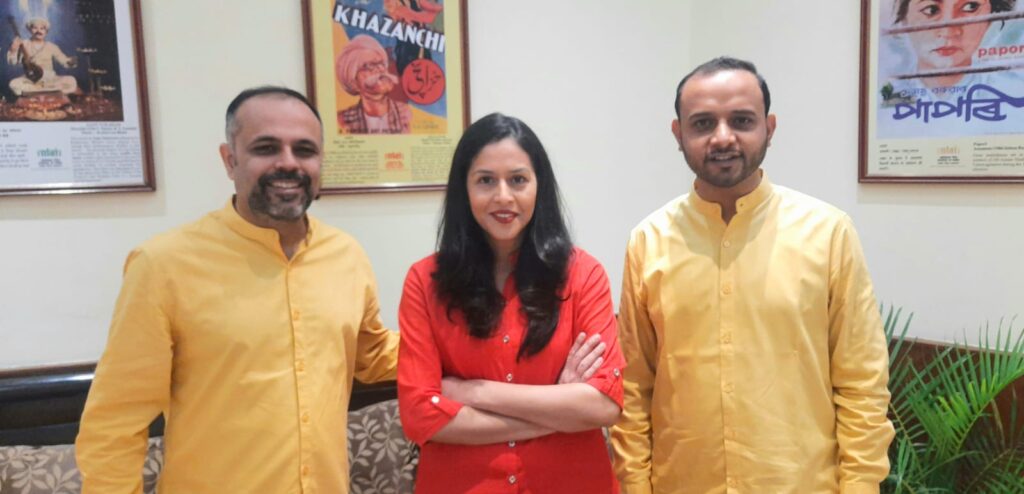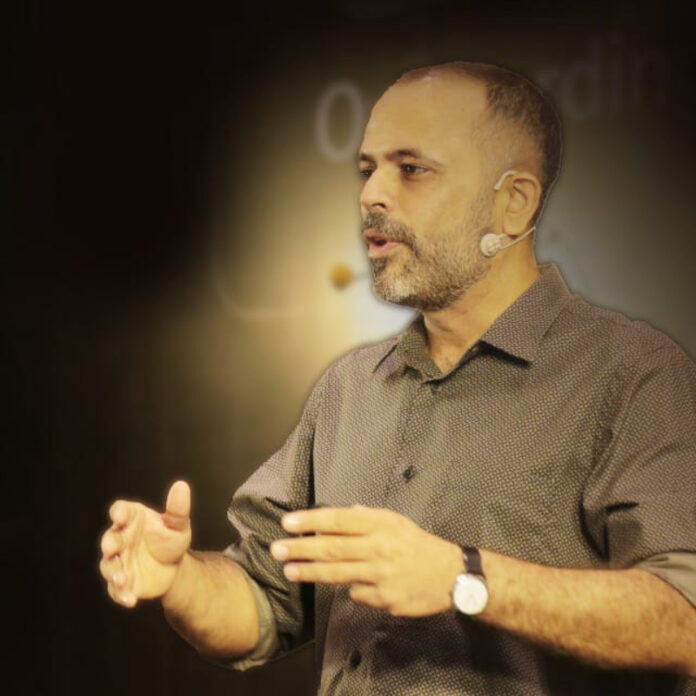Established in 2017, Nautankibaaz Improv Collective, commonly known as NIC, stands out as one of India’s leading improvisational theater groups, with its base in Gurugram. Having successfully staged comedy shows throughout the country, NIC also conducts improv classes catering to diverse age groups, both for educational institutions and corporate organizations. Notably, NIC holds the distinction of being the sole improv group in India to have showcased their talent at the prestigious Rashtrapati Bhavan in New Delhi.
The Nautankibaaz Improv Collective is led by a dynamic trio, including Ankur Sardana, the Founder, Anshu Daga, Founder of Inner Startup, and Ankur Nigam, a Consultant and Standup Comedian.
In an insightful conversation with The Interview World, Ankur Sardana, the brain behind Nautankibaaz Improv Collective and Head of Design at Tata Neu, delves into the distinctive features that characterize improv as a form of pop art, highlighting its stark differences from traditional “nuked natak.” Sardana also traces the roots of improv, shedding light on the ongoing experimentation and innovation that NIC is spearheading in the Indian improv scene.
Q: What types of theatrical experiments or innovative approaches are currently being explored within the Indian theater community?
A: In India, we engage in the exciting realm of improv theatre, an improvisational form where the narrative isn’t pre-rehearsed. Instead, stories unfold spontaneously, crafted on the spot from audience suggestions. This unique form of storytelling encourages high levels of audience involvement. Considering the relatively recent introduction of this art form to India, our focus is on widespread dissemination. We aim to promote improv across diverse educational institutions, various age groups, through workshops, and captivating shows. This serves as our method to convey the essence and appeal of improv to a broader audience.
Q: What specific topics or themes do you address or explore in your improv performances?
A: We address a variety of issues in our work. Specifically, here we delve into topics concerning e-waste and recycling to ensure that the scenes we depict resonate with the audience. However, it’s important to note that this isn’t our primary focus. Our intention here is not to preach but to engage in discussions about these matters. The fundamental goal of pop art, after all, is to portray the happenings in our surroundings. Enhancement is a distinctive aspect of pop art that we aim to achieve.
Q: What are the key distinctions between improv and nuked natak?
A: In contrast to nuked natak, improv varies on several fronts. Unlike nuked natak, which adheres to a basic script and a specific agenda addressing social causes, improv doesn’t consistently focus on societal issues. It can range from pure comedy to a blend of seriousness and humor.
Initiating an improv performance involves engaging the audience right from the start. We inquire about their preferences, allowing their input to shape the direction of the performance. The audience serves as the foundation of improv. Conversely, nuked natak follows a thoughtful process. The performer may have a predetermined script and an envisioned performance, highlighting a clear distinction between the two approaches.
Q: What is the origin of improv theater?
A: Originating in America, improv has an interesting history. In the 1920s, Viola Spolin, a trailblazer in improv, took charge of a children’s house. This setting comprised children from various immigrant backgrounds who, due to language barriers and diverse ethnicities, struggled to communicate.
To address this, Viola introduced a game encouraging interaction among the children. Over time, these games evolved into performance art, some taking on a comedic nature, while others transformed into theater sports. This innovative approach gained immense popularity in America, leading to the establishment of formal improv education and degree programs in colleges.
In the corporate landscape of America, individuals trained in improv are often valued for their contributions to training and corporate leadership. However, in India, improv is still in its nascent stages, with the practice being at a rudimentary level.
Q: How would you describe the nature and extent of the responses you are currently receiving?
A: We have received an overwhelmingly positive response for our performances. So far, we have showcased our talents in over 100 shows across India. An exciting highlight was our opportunity to perform at Rashtrapati Bhawan. Our performances have taken us to various colleges, institutes, and organizations. Wherever we go, there is a palpable interest, particularly among the youth who enthusiastically embrace our act. What makes these shows even more rewarding for us is the sheer enjoyment we derive from them.



